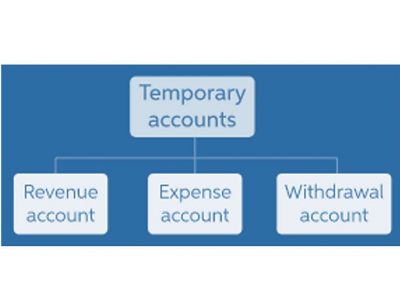
Remember, the trial balance is not just a formality but a fundamental component of financial transparency and accountability. Investors may not directly analyze the post-closing trial balance, but they are interested in the implications it has on the financial statements they do review. The accuracy of this document indirectly affects their perception of the company’s financial health.

Understanding the Adjustments and Closing Entries in Accounting Cycles
- The next step of the accounting cycle is to prepare the reversing entries for the beginning of the next accounting cycle.
- The difference between the unadjusted trial balance and the adjusted trial balance is the adjusting entries that are required to align the company accounts for the matching principle.
- Understanding the post-closing trial balance is essential for grasping the flow of accounts and the overall financial health of a business.
- Its purpose is to test the equality between debits and credits after adjusting entries are prepared.
- It is important for you as a business to tally your trial balance sheet.
Run the trial balance reports to confirm that every transaction has been accurately and fully recorded. Once they are, you are prepared for the start of the new accounting period. In other words, a post-closing trial balance only includes permanent accounts, such as assets, liabilities, and equity accounts, which are not closed at the end of https://www.bookstime.com/articles/bookkeeping-houston the accounting period. The purpose of an adjusted trial balance is to ensure that all accounts are up to date and to check the accuracy of the accounting records before preparing the financial statements. The trial balance format contains two columns; the debit balances listed in one column and credit balances listed in the other. Once the trial balance is created, the debits and the credits, the next step is to make the financial statements.
Identifying discrepancies and investigating potential errors

He is known for his pragmatic approach to fiscal policy and governance. Accountants and auditors anticipate a future where manual reconciliations and data entry are relics of the past. Advanced software solutions are expected to handle the bulk of transaction matching and anomaly detection, freeing up professionals to focus on analysis and strategic decision-making. For the past 52 years, Harold Averkamp (CPA, MBA) hasworked as an accounting supervisor, manager, consultant, university instructor, and innovator net sales in teaching accounting online. For the past 52 years, Harold Averkamp (CPA, MBA) has worked as an accounting supervisor, manager, consultant, university instructor, and innovator in teaching accounting online.
Post-Closing Trial Balance Vs. Adjusted Trial Balance:
For instance, your company’s trial balance sheet provides an audit trail to the auditors. They are thus able to provide their comments with regards to the financial statements so prepared in the audit report. This is because a correct trial balance statement helps you in preparing basic financial statements including the income statement and the balance sheet. Thus, there is no need for you to go through each of the ledger accounts while preparing financial statements.
- Some of the important accounts that your business management can track include purchases, debtors, sales, etc.
- The format of a post-closing trial balance statement is also similar to the adjusted trial balance summary.
- No temporary accounts—revenues, expenses, or dividends—are included because they have been closed.
- The post-closing trial balance ensures that debits and credits are balanced, verifying the accuracy of the ledger.
- This is because your trial balance showcases the total balances of your accounts only.
- They are an unadjusted trial balance, adjusted trial balance, and post-closing trial balance.

In other words, your adjusted trial balance verifies that all post closing trial balance example your debit balances of accounts equate to their credit balances. Furthermore, an adjusted trial balance also helps you to prepare financial statements that comply with the accounting principles. A post-closing trial balance is a listing of all balance sheet accounts containing non-zero balances at the end of a reporting period.
Closing Entries and Their Impact on Financial Statements
- Since the team has likely already prepared and finalized the adjusted trial balance, the closing process is the only place for error.
- All accounts with debit balances are listed on the left column and all accounts with credit balances are listed on the right column.
- Each account balance is transferred from the ledger accounts to the trial balance.
- For example, if a company had a vehicle at the beginning of the year and sold it before year-end, the vehicle account would not show up on the year-end report because it’s not an active account.
- The post-closing trial balance will include assets, liabilities, and equity accounts that are permanent and have a non-zero balance at the closing date of an accounting period.
This post-closing trial balance helps in checking the accuracy of permanent ledger account balance. It is important to do this checking because so many new postings go to the ledger account from the adjusting entries and closing entries. This step is crucial as it resets the temporary accounts to zero, readying them for the next accounting period.
